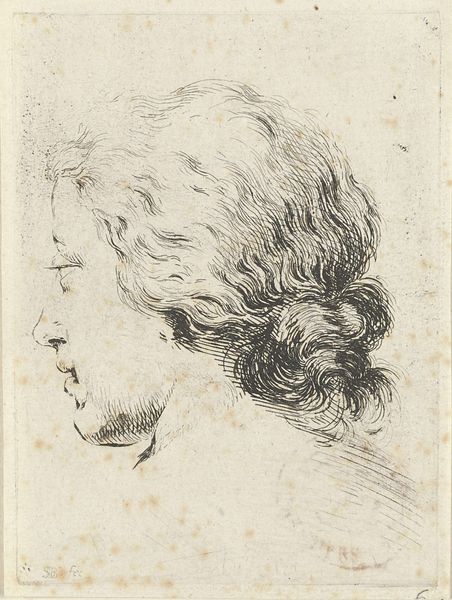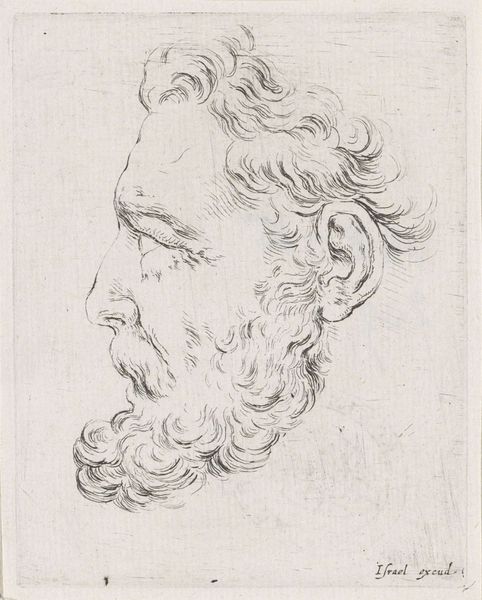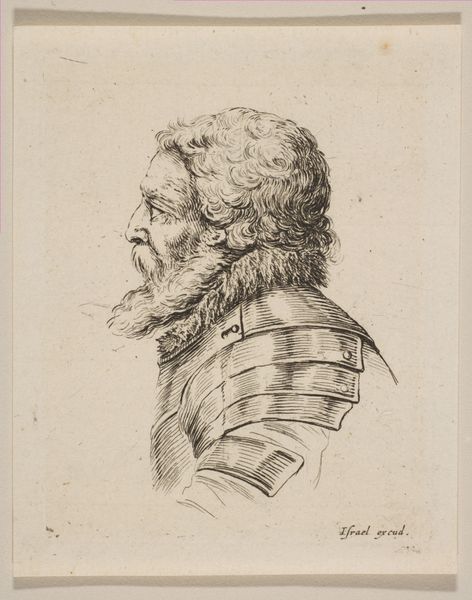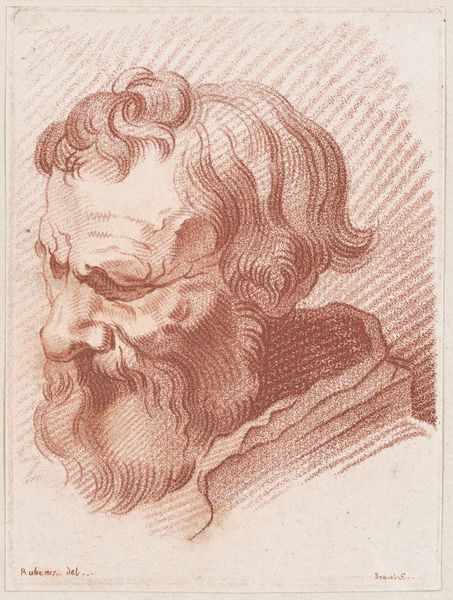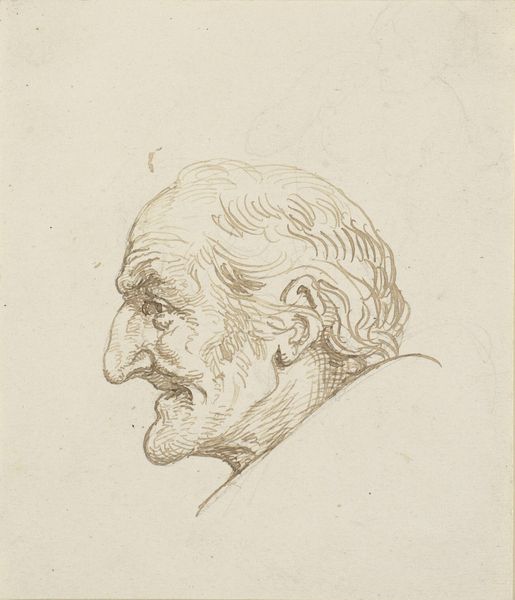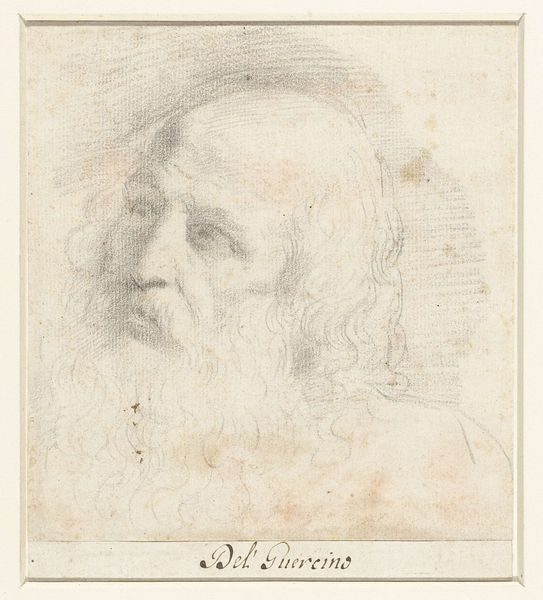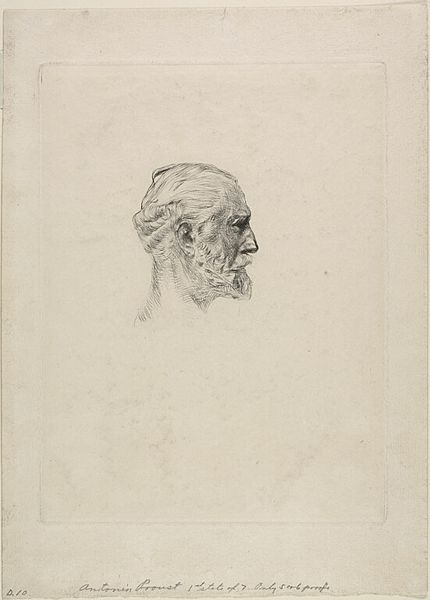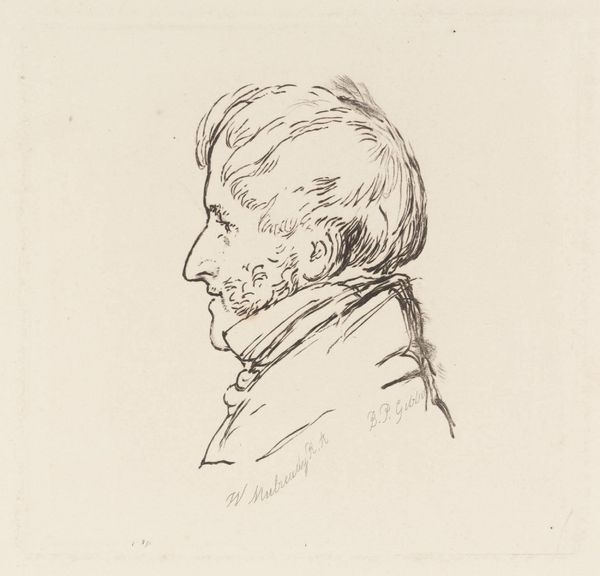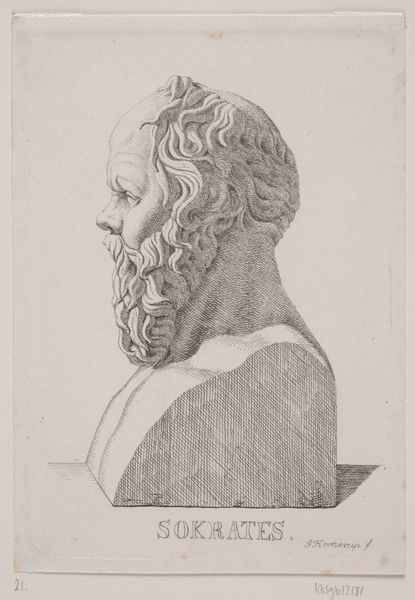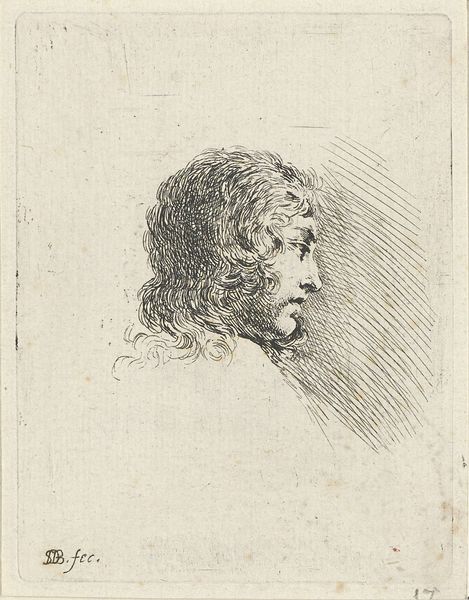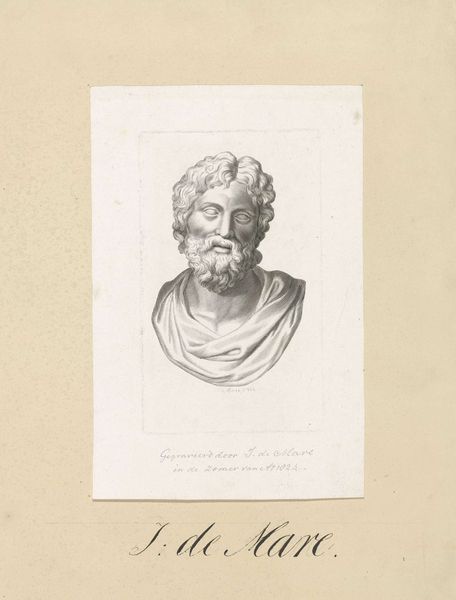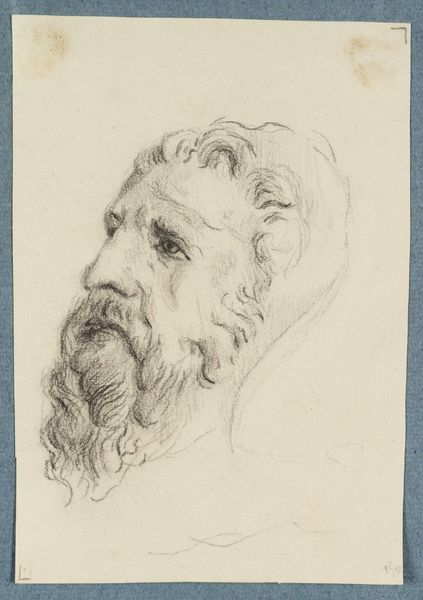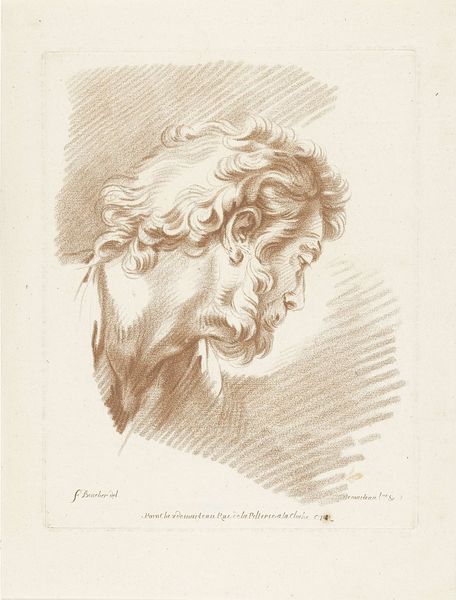
print, etching
#
portrait
#
neoclacissism
# print
#
etching
#
history-painting
#
academic-art
Dimensions: height 108 mm, width 75 mm
Copyright: Rijks Museum: Open Domain
Curator: The resolute gaze of the subject in this print commands attention. Created by Daniël Jean Guicherit, circa 1778 to 1813, this etching titled "Hoofd van man," or "Head of a Man," exemplifies Neoclassical portraiture. Editor: Indeed. What strikes me immediately is the artist’s skillful use of line. Look at the meticulous hatching to render the texture of the hair and beard. The rigorous control really emphasizes the man's gravity. Curator: Guicherit's piece adheres to the Neoclassical era's artistic trends, a period profoundly shaped by rediscovering and emulating classical antiquity's art. Editor: Absolutely. Note the man’s idealized features. It almost seems like the artist is invoking the head of a Greek philosopher or Roman leader, with an eye toward timeless beauty and intellect. This man’s expression has almost no emotional content, as if sculpted from stone, rather than portrayed in life. Curator: You're correct in that assumption. By evoking antiquity through prints like this one, Neoclassical artists such as Guicherit not only portrayed their subjects, they associated them with the virtues and the gravity of classical republicanism. This was quite pointed during an era of revolution and social change. Editor: It's interesting how a simple head study, relying purely on line and form, can carry so much cultural baggage. Even without colour, the etching method lends itself perfectly to those very fine, detailed representations favored by Neoclassicism. The sharpness and the subtle gradations are remarkable. Curator: Works such as "Head of a Man" show the Neoclassical movement's use of historical reference, the style offered a powerful visual language that engaged with debates around citizenship, virtue, and the relevance of the past. Editor: And in viewing the art, that past is once again very vividly present. It's impressive how technical choices interact to reinforce cultural ideas.
Comments
No comments
Be the first to comment and join the conversation on the ultimate creative platform.
